
Thick as a Brick is the fifth studio album by the British rock band Jethro Tull, released in March 1972. The album contains a continuous piece of music, split over two sides of an LP record, and is a parody of the concept album genre. The original packaging, designed like a newspaper, claims the album to be a musical adaptation of an epic poem by fictional eight-year-old genius Gerald Bostock, though the lyrics were actually written by the band's frontman, Ian Anderson.

Aqualung is the fourth studio album by the British rock band Jethro Tull, released on 19 March 1971, by Chrysalis Records. It is widely regarded as a concept album featuring a central theme of "the distinction between religion and God", though the band have said there was no intention to make a concept album, and that only a few songs have a unifying theme. According to one reviewer, the album has "dour musings on faith and religion" which for him have marked it as "one of the most cerebral albums ever to reach millions of rock listeners". Aqualung's success signalled a turning point in the career of the band, which went on to become a major radio and touring act.
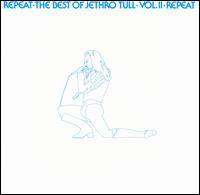
Repeat – The Best of Jethro Tull – Vol II is a 1977 greatest hits album from Jethro Tull, featuring one track which, up to the time of this album's release, had not been issued. The album's first volume was M.U. – The Best of Jethro Tull.

Too Old to Rock 'n' Roll: Too Young to Die! is the ninth studio album released by British band Jethro Tull, recorded in December 1975 and released in 1976. It is the first album to include bassist John Glascock who also contributes with backing vocals. Too Old to Rock 'n' Roll: Too Young to Die! is the last Jethro Tull concept album, which follows the story of Ray Lomas, an ageing rocker who finds fame with the changes of musical trends.
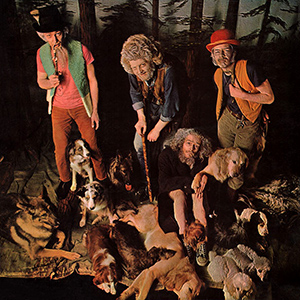
This Was is the debut studio album by the British rock band Jethro Tull, released in 1968. Recorded at a cost of £1200, it is the only Jethro Tull album with guitarist Mick Abrahams, who was a major influence for the sound and music style of the band's first songs. When the album was released the band was already performing at the Marquee Club in London, where other successful British groups, such as the Rolling Stones and The Who, had started their careers.

Stand Up is the second studio album by the British rock band Jethro Tull, released in 1969. Before recordings for the album began, the band's original guitarist Mick Abrahams resigned because of musical differences with Ian Anderson; Abrahams wanted to stay with the blues rock sound of their 1968 debut, This Was, while Anderson wished to add other musical influences such as folk rock. He was replaced by guitarist Martin Barre, who appeared on every subsequent Jethro Tull album.

Minstrel in the Gallery is the eighth studio album by British band Jethro Tull, released in September 1975. The album goes in a different direction from their previous work War Child (1974), with the orchestration being replaced by a string quartet conducted by Dee Palmer. The band also returned to the blend of electric and acoustic pieces, in a manner closer to their early '70s albums such as Benefit (1970), Aqualung (1971) and Thick as a Brick (1972), and for the first time since their two concept albums of Thick as a Brick (1972) and A Passion Play (1973), they recorded a song of more than ten minutes, which occupies almost all of the second side of the record.

Benefit is the third studio album by the British rock band Jethro Tull, released in April 1970. It was the first Tull album to include pianist and organist John Evan – though he was not yet considered a permanent member of the group – and the last to include bass guitarist Glenn Cornick who was fired from the band upon completion of touring for the album. It was recorded at Morgan Studios, the same studio where the band recorded its previous album Stand Up however the band experimented with more advanced recording techniques.

Crest of a Knave is the sixteenth studio album by British rock band Jethro Tull, released in 1987. The album was recorded after a three-year hiatus caused by a throat infection of vocalist Ian Anderson, resulting in his changed singing style. Following the unsuccessful electronic rock album Under Wraps, ‘Crest of a Knave’ had the band returning to a more hard rock sound. The album was their most successful since the 1970s and the band enjoyed a resurgence on radio broadcasts, appearances in MTV specials and the airing of music videos. It was also a critical success, winning the 1989 Grammy Award for Best Hard Rock/Metal Performance Vocal or Instrumental in what was widely viewed as an upset over the favorite, Metallica's ...And Justice for All. The album was supported by "The Not Quite the World, More the Here and There Tour".
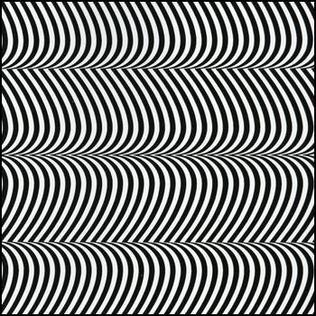
Pulse Demon is an album by the Japanese noise musician Merzbow, released 28 May 1996. The album was reissued on vinyl in May 2018 by Bludhoney Records, and again in November 2019 by Relapse, with a bonus track.
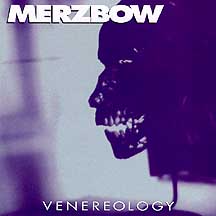
Venereology is an album by the Japanese noise musician Merzbow. It was inspired by death metal and grindcore.

Living in the Past is a double album quasi-compilation collection by Jethro Tull, which contains album tracks, out-takes, the "Life Is a Long Song" EP, and all of their non-LP singles except for "Sunshine Day"/"Aeroplane" (1968), "One for John Gee", "17" and the original version of "Teacher" that appeared in the UK as the b-side of "The Witch's Promise" in 1969.

13 Japanese Birds is a 15 album series by the Japanese noise musician Merzbow. It was inspired by Olivier Messiaen's Catalogue d'oiseaux, but has no direct musical relationship.

Pinkream is a 1996 album by the Japanese noise musician Merzbow. It was originally released as a double 10" LP with one side blank, it was then reissued on CD with two bonus tracks.

Hiranya is an album by Japanese noise musician Merzbow. The album was originally supposed to be released for Merzbow's appearance on May 17 at No Fun Fest in New York City, but Masami Akita cancelled his tour due to travel restrictions caused by the swine flu outbreak. The album art parodies that of Aqualung by Jethro Tull, with the human figures replaced with birds. The artwork of Graft was also inspired by a Jethro Tull record.

Ouroboros is an album by the Japanese noise musician Merzbow. It is named after the Ouroboros, a symbol depicting a serpent or dragon swallowing its own tail and forming a circle, and is dedicated to snakes.

Antimonument is an album by the Japanese noise musician Merzbow. It was originally released as a picture disc LP and reissued on CD by Art Directe in 1991. The CD is now considered a bootleg since the label did not pay the artists.

Samidara is an album by the Japanese noise musician Merzbow, released as both an LP and a cassette. It was made available for pre-order on December 5, 2012, but didn't start shipping until July 2013.
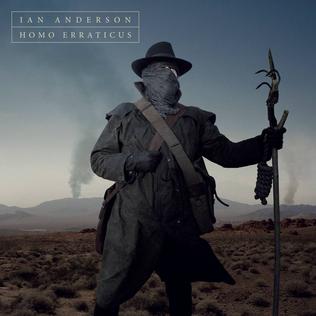
Homo Erraticus is the sixth studio album by British progressive rock musician Ian Anderson, who is also the frontman of Jethro Tull. Released on 14 April 2014, Homo Erraticus is a concept album, loosely connected to Jethro Tull's Thick as a Brick (1972) and Anderson's Thick as a Brick 2 (2012), since it again credits the lyrics to the fictional character Gerald Bostock.

Gensho is the fourth collaborative studio album and seventh release by the Japanese experimental band Boris and noise musician Merzbow. It is presented in two parts; the first disc features re-recordings of several Boris songs and a cover of the My Bloody Valentine song "Sometimes" in drone-based, drumless style, while the second disc consists of new compositions by Merzbow. They are intended to be played at the same time, much like the previous Boris double album Dronevil, or as separate works.




















